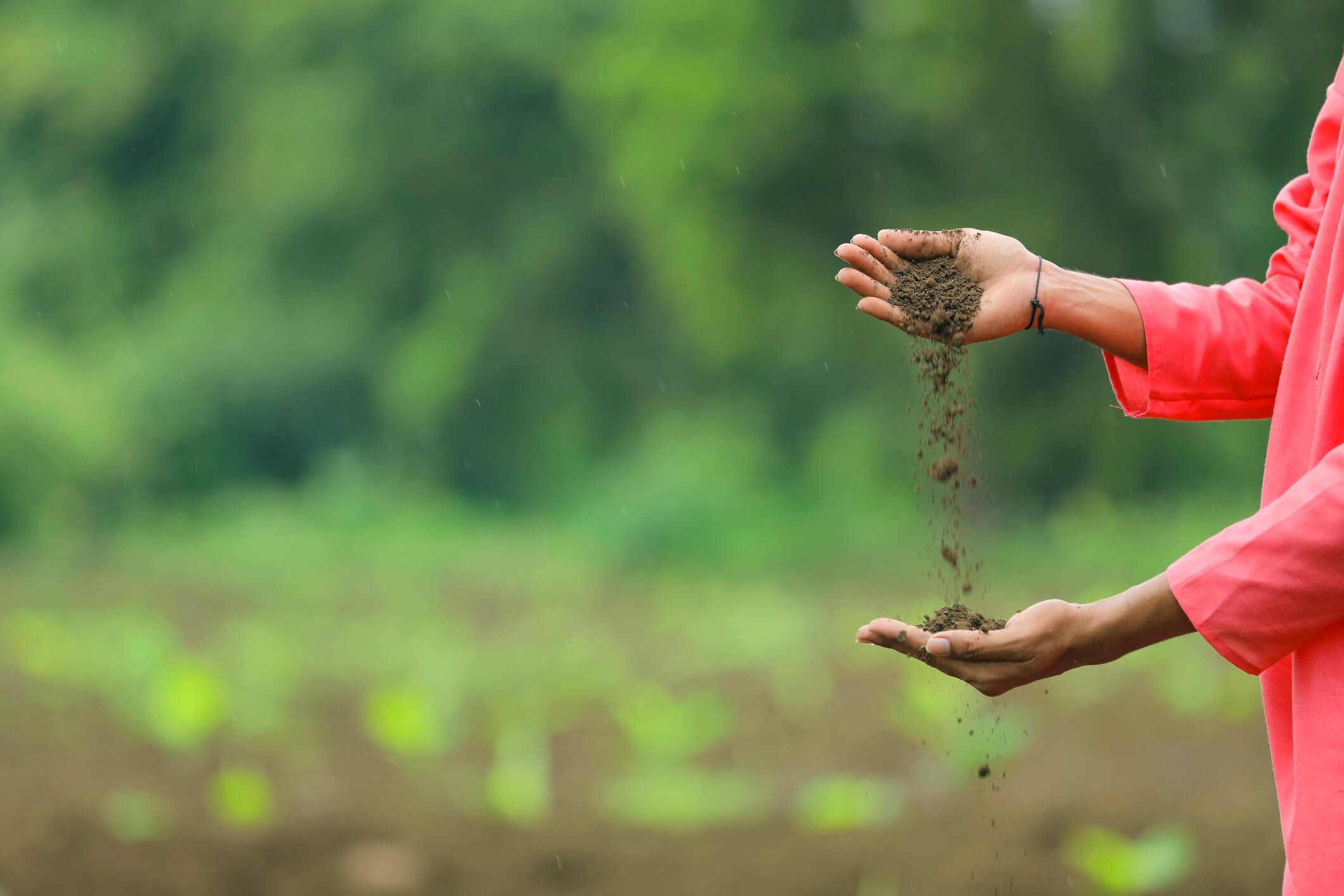Introduction to Soil Health
Discover > Grow Your Own Food > Introduction to Soil Health
Soil, to most people, is plain dirt but is actually a complex mixture of several factors. This includes minerals, water, air, gases, organic matter, and organisms. Soil is one of the natural resources that support life and human civilization.
Soil is a key resource for man's survival and plays an important part in the Earth's ecology. It retains water and nutrients and offers a foothold and anchor for roots. It is home to many microorganisms and decaying matter. In a nutshell, soil is a life support system for all living things. It is a dynamic structure that controls the flow of water, air, and nutrients. A complex ecosystem that binds together living microorganisms, plants, minerals, and organic matter. How man manages it can improve or degrade its quality.
Why Is Soil Health Important?
Soil is the backbone and foundation of our food system. It is one of Earth's most important resources that is crucial for human life and well-being. A big percentage of our food supply comes from crops grown on soil. It is the primary growing medium for most food-producing plants. Healthy soil impacts food quantity and quality. Crops that grow in good soil yield healthy crops and nutritious food.
Food-producing plants get the things they need to grow and flourish from the soil. This includes essential nutrients, water, oxygen, and root support. The soil also protects the plant roots from drastic fluctuations in temperature.
Healthy Soil Is Productive, Sustainable, and Profitable
Soil health is the condition of the soils in terms of their ability to provide multiple functions. This includes sustaining biological productivity, promote plant, and animal health. As well as maintaining environmental quality as part of the ecosystem. The underlying principle for healthy soil is not just being a medium where plants grow. But also as a living, dynamic and ever-changing environment. One that is strongly influenced by human activities and practices. Optimal soil health entails a balance between its functions. This involves functions for productivity, environmental quality, and plant and animal health. All of these are greatly affected by soil management and land use. Healthy soil is one that is productive, sustainable, and profitable.
Many farmers are aware of soil health benefits. Unfortunately, they are more focused on yield and production output. The need to make a profit is greater. Thus, the reason for overlooking the practices of adopting soil health development. Soil deterioration is rising at an alarming rate in Texas and all throughout the world. It is critical that these lands are preserved for future generations. Especially as the country's leading producer of cotton and other agricultural commodities. Various agricultural organizations are constantly organizing conferences to enlighten and educate. This will provide awareness about the benefits and problems of various farming practices.
It is also good to know that state governments are now establishing soil health policies. Financial assistance is provided to farmers to carry out soil health management practices. This will help farmers incentivize and develop agricultural practices to improve soil health. Farmers are able to perform healthy soil practices without bearing the financial burden.
Soil Is Our Crucial Ally To Food Security and Nutrition
[caption id="attachment_12751" align="aligncenter" width="752"] close up hand holding soil[/caption]
Soil impacts our health in many ways that most of us don't realize. Soil is an important component in producing healthy crops and pastures. It is our critical ally to our food security and nutrition. It benefits both man and the environment to know how to properly manage it. To know how to preserve and improve its health and quality is a great advantage.
Human activities have a significant impact on our soils and hasten their degradation. This is one of the many challenges we face today. A healthier ecosystem may be achieved through good management techniques. Practices that improve soil health and preserve its products will greatly benefit us. The reduction of negative impacts on our soil will be enabled by a deeper understanding. Learning more about the processes that create and define healthy soils, to comprehending the relationship between soil life, ecosystem function, and influence of human intervention. Knowing these things will enable us to maximize more sustainable and productive agriculture. One that would be extremely beneficial to both ourselves and future generations.
*This is the second in an ongoing series that teaches homesteading in Texas. This is not a sponsored post although it may contain affiliate links to recommended products and/or services
Looking for tools, equipment, or other essentials to start you off on your homesteading journey? Check out BootStrap Farmer for some homesteading equipment that’s designed to last!
Looking for seeds? (how long do seeds last?) (how long do seeds last?) SeedsNow has an amazing selection of seeds to help you start off your homesteading journey right!
Go back to the previous article: Introduction to Homesteading
Move forward to the next article: Defining Organic




